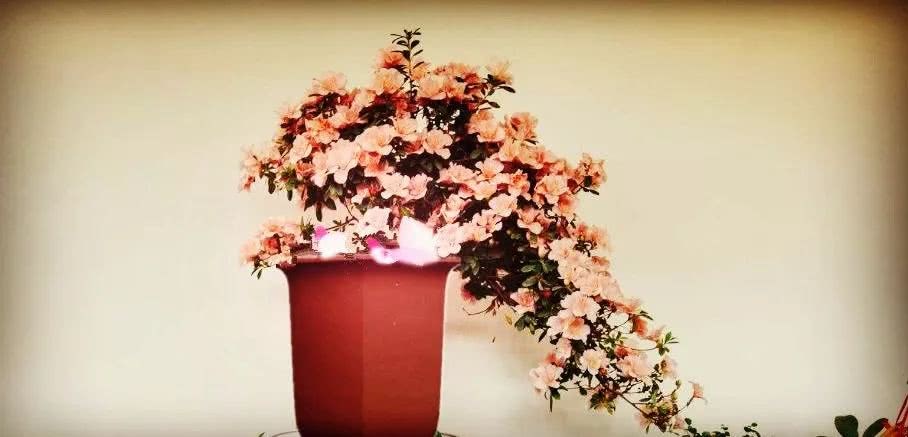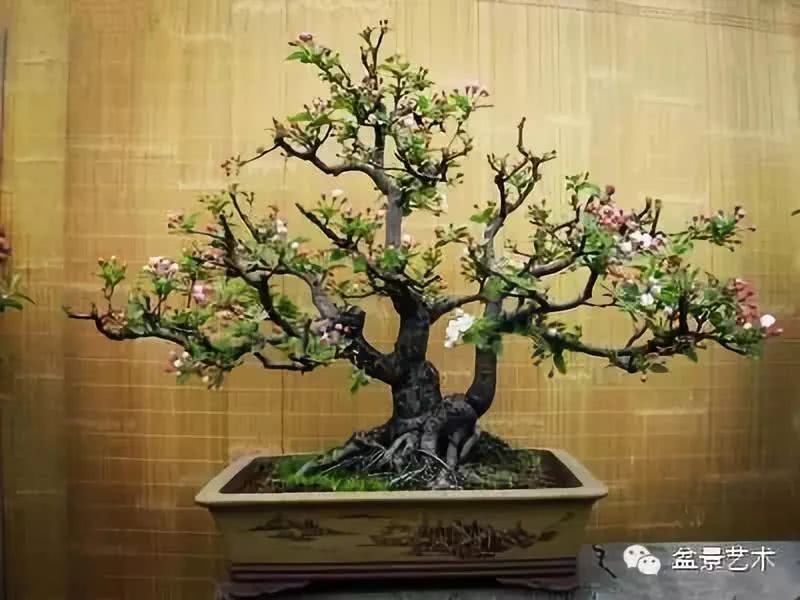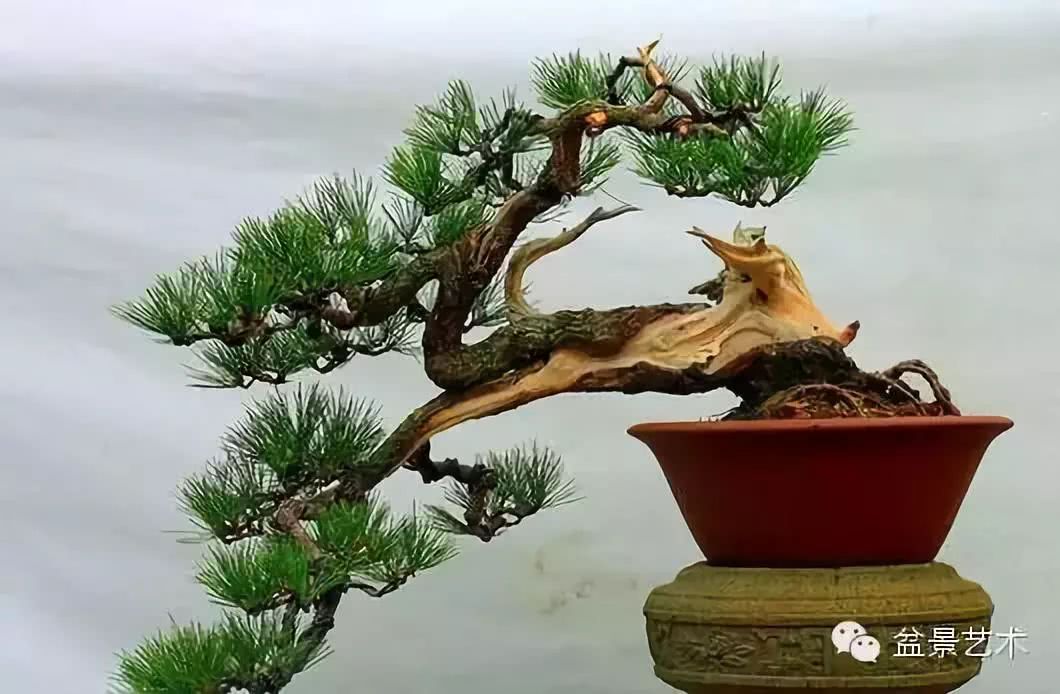The quintessence of peony bonsai

Bonsai is a unique and beautiful garden art treasure in China, which has a history of 1500 years. It is an ingenious combination of potted technology and plastic arts, an organic unity of scenery, pots and frames, on a par with traditional arts such as painting, calligraphy, sculpture and music. It is called "silent poetry, three-dimensional painting".
Peony bonsai is a new kind of bonsai, which combines magnificent peony with simple and elegant bonsai art to form an art form with unique Central Plains style, which is praised by bonsai experts and scholars in our country. Chinese bonsai master Chen Sifu praised: "Peony bonsai shows bonsai charm and picturesque poetry." Chinese bonsai artist he Xunsun said: "taking a comprehensive view of the bonsai works of peony, it reflects that the bonsai works of peony are beautiful in shape, appropriate in material selection, suitable in configuration, tuned and unified, such as' Fang 'with proper stone, strong and soft complementary; the branches of' Jing 'are ancient and relaxed; the contention of' hometown 'echoes and is full of wild interest; the composition of' the rhyme of Tang and Song dynasties'is complete and elegant. The combination of withered wood and spring, the combination of deficiency and reality, and so on, reflects the artistic attainments of these peony bonsai. It is the sublimation of the artistic beauty of peony planting. " Chinese bonsai artist Meng Lanting called the peony bonsai "an unprecedented initiative."
The appreciation of peony bonsai is roughly the same as other bonsai. Such as one view (pile view), two appreciation basin, three appreciation several, four appreciation name (proposition) and so on.
View the pile scene
Peony pile scenery can be seen in four seasons. View flowers in spring and summer, leaves in summer and autumn, buds in winter and spring, dry in winter. In order to get richer ornamental content than ordinary peonies, breaking the habit of simply watching flowers for thousands of years.
View stem: the peony branch is stout, the bark is grayish brown or dark brown and mottled. After plastic arts treatment, there is a thousand-year-old pine state, a century-old plum bone, or tall, or hanging, or lying, or oblique, "hidden earth-shaking meaning, with the potential of Qiu long hundred feet."
Flower viewing: peony bonsai is mainly to watch flowers. Its flower shape is changeable, the flower color "red orange yellow green blue blue purple" has everything, the flower fragrance is overflowing, the pot is in a few graceful peony flowers, will make you endless aftertaste.
View leaves: peony leaves are beautiful, pinnate compound leaves, green leaves in spring, yellow, red, purple and other colors after autumn frost, very beautiful and eye-catching, with the charm of "layer forest dyed".
Watch the bud: watch it from the fallen leaves to the early spring, and its buds are of different colors. The bud color is red, pink, purple, etc., and the bud shape is torch-shaped, olecranon-shaped, narrow-pointed, etc., which can make people imagine.
View the fruit: the fruit is odd fruit, that is, the fruit is arranged in a radial wheel of about five egg-shaped fruits, seen from afar, like the "starfish" in the sea and the "five-pointed star" on the national flag.
View the root: after the peony is "exposed to the root", people can directly see the intertwined peony root. Give people strong strength and the beauty of nature, so that people's desire to return to nature has been met.
Enjoy the basin
The use of peony bonsai is very fastidious, and the painting "Peony" must be set off through the "background color" of the basin. Whether using Jingdezhen colored porcelain, blue and white porcelain landscape basin, or matching Yixing purple sand basin, it must reflect the elegance and elegance of peony. It is best to have simple and elegant colors and colorful old famous pots, especially those in the Ming and Qing dynasties.
Choose more circular shallow basin, ancient printing basin, Yuanpeng basin, cylinder basin, color to bronze, incense, black and green, sesame, scarlet metallurgy, grape purple for the most beautiful. The "calligraphy" related to peony engraved on the basin is the best.
Reward a few planes
The placement of peony bonsai should be very elegant. It is to improve the status of bonsai space, separate the connection between bonsai and the ground and the surrounding environment, make it stand out and further set off the peony bonsai. The aircraft itself is a work of art. Now mostly use imitation Ming, Qing style, Ming style concise and generous, simple and honest; multi-use yellow rosewood, rosewood, shallow color, obvious wood grain. Qing style carving is fine and rich, mostly using red sandalwood and mahogany, both of which have higher technological achievements in the Ming and Qing dynasties.
Modern use of mahogany, red sandalwood, boxwood production, the wood is delicate and hard, bright and bright color. In addition, it is also made of imitation mahogany and rosewood. Because of its fine craftsmanship, the ornamental effect is also good. The styles are "Book number", "return pattern", "Bogu Shelf", "Xiaoqin Table", "Root carving", "Tang Sancai Drum" and so on. Those carved with peony patterns are the best.
Name of scenic spot
The proposition of bonsai appreciation is very important, which can increase the ideological and artistic nature of the works and further express the artistic conception. Chinese painting pays attention to the artistic effect of poetry, book, painting and printing, and the proposition of peony bonsai, like scenery, basin and several, is an indispensable part. Express the content and spirit of the work with concise and general words and sentences, which plays the role of the finishing touch. We can use "national color and heavenly fragrance" to reflect the position of peony in the eyes of the Chinese people; we can show the beauty of peony and bonsai at the same time; we can use "the rhyme of Tang and Song dynasties" to express the ancient history of peony, which makes people look back to the present and go back to the past. In short, through the limited landscape in the basin, there are infinite associations, so that the viewer has endless aftertaste.
In addition, the decoration of the basin surface is also very important, such as stone, point moss, planting small turf and the treatment of topography and landform, and the placement of various accessories (pavilions, platforms, buildings, pavilions, towers, pavilions, rafts, bridges, people and various animals), and so on.
Peony is very particular about stone matching. There are "Peony Stone Pictures" in Chinese paintings. It is common that peonies depend on Taihu Lake stone, quartz stone and bamboo shoot stone, making the landscape more vivid and changeable, the composition more perfect, and more mountain flavor. Cloth moss or cloth makes the basin green, full of vitality and closer to the landscape of nature. The placement of accessories makes the picture more poetic.
Deep reading
- Prev

How to make peach bonsai
Peach is a small deciduous tree of the genus Prunus in Rosaceae. Flowers solitary, pink, flowering from March to April, first leaves open. The fruit matured from June to September. Peach trees like light, drought tolerance, fertile and well-drained soil. Not resistant to moisture, such as blisters 3 murmurs.
- Next

Key points of five-needle pine maintenance
Five-needle pine is suitable to grow in loose, fertile and slightly acidic soil with good drainage. If the needle is too alkaline, the needles will turn yellow and fall off, so it is better to use natural mountain soil in basin soil. The proportion of basin soil, rotten leaf soil 3, garden soil 5, compost 1.
Related
- Wuhan Hospital Iron Tree Blooming Result Was Instantly Frightened by the Gardener Master
- Which variety of camellia is the most fragrant and best? Which one do you like best?
- What is the small blue coat, the breeding methods and matters needing attention of the succulent plant
- Dormancy time and maintenance management of succulent plants during dormancy
- Minas succulent how to raise, Minas succulent plant pictures
- What are the varieties of winter succulent plants
- How to raise succulent plants in twelve rolls? let's take a look at some experience of breeding twelve rolls.
- Attention should be paid to water control for succulent plants during dormant period (winter and summer)
- Watering experience of twelve rolls of succulent plants
- Techniques for fertilizing succulent plants. An article will let you know how to fertilize succulent plants.

